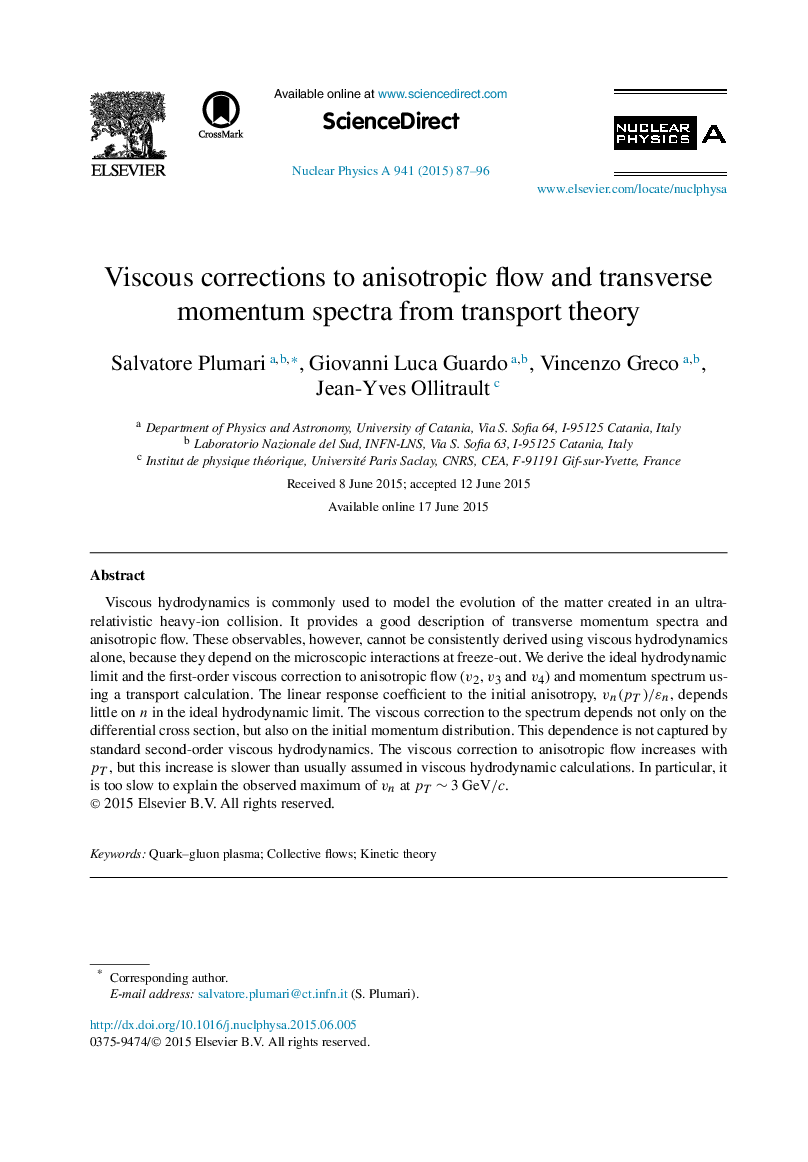| Article ID | Journal | Published Year | Pages | File Type |
|---|---|---|---|---|
| 1836860 | Nuclear Physics A | 2015 | 10 Pages |
Viscous hydrodynamics is commonly used to model the evolution of the matter created in an ultra-relativistic heavy-ion collision. It provides a good description of transverse momentum spectra and anisotropic flow. These observables, however, cannot be consistently derived using viscous hydrodynamics alone, because they depend on the microscopic interactions at freeze-out. We derive the ideal hydrodynamic limit and the first-order viscous correction to anisotropic flow (v2v2, v3v3 and v4v4) and momentum spectrum using a transport calculation. The linear response coefficient to the initial anisotropy, vn(pT)/εnvn(pT)/εn, depends little on n in the ideal hydrodynamic limit. The viscous correction to the spectrum depends not only on the differential cross section, but also on the initial momentum distribution. This dependence is not captured by standard second-order viscous hydrodynamics. The viscous correction to anisotropic flow increases with pTpT, but this increase is slower than usually assumed in viscous hydrodynamic calculations. In particular, it is too slow to explain the observed maximum of vnvn at pT∼3 GeV/cpT∼3 GeV/c.
